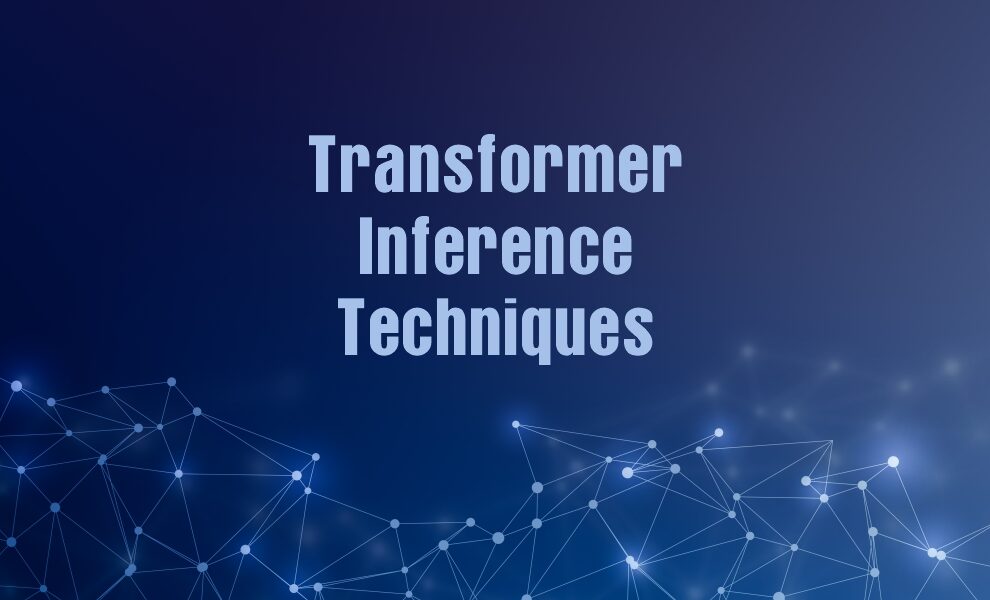Consider asking a master scholar a complex question. They might take weeks in a library, reading every book to write the perfect answer. That’s the same way that large AI models, such as those used in chatbots and image generators, are trained. It’s a slow, costly process needing huge amounts of computational capacity. But when you finally query that model, the inference process, you need an answer in seconds, not weeks. You need the scholar to be a nimble conversationalist.
This is the essential problem of using modern AI. As the models become smarter, so do they become larger in terms of having billions, even trillions, of parameters. Ensuring that these behemoths respond fast and efficiently for millions of users. This is the main objective of transformer inference techniques. Without these intelligent techniques, the AI revolution would be trapped in research labs and unavailable for real-world use.
This article shares the main methods that make large-scale AI a possibility, explained in simple human language.
Understanding Transformance Inference Techniques
In order to comprehend the solutions, first, we need to understand the problem. The Transformer model, behind the likes of GPT-4, is highly efficient. Its “attention mechanism,” which enables it to grasp context, however, is seeking for computation. At inference time, as it goes through a new word being generated, it has to recalculate how it relates to every past word. This has a snowballing effect: generating a long paragraph takes vastly more work than a short sentence.
The expense is not only time; it is money and effort. Training a large model on high-power cloud servers is costly. A 2025 Stanford AI Index report placed emphasis on the fact that training large language models can cost millions of dollars. Inference costs per query may be lower, but serving billions of queries scales this cost exponentially. The purpose of Transformer inference techniques is to subdue this complexity, making models faster, less expensive, and more environmentally friendly without losing the excellence of their responses.
Major Transformer Inference Techniques
Engineers and scientists have built up a toolkit of optimizations to make the transformer inference techniques more efficient. These can be collectively imagined as trimming the model itself or getting the computer hardware to execute it in a savvy.
1. Model Compression: A “Lighter” Scholar
This family of techniques focuses on reducing the model’s size and complexity.
Quantization: Think of this as reducing the precision of the numbers the model uses. Instead of using detailed 32-bit decimal numbers for every calculation, the model might use 8-bit integers. It is like swapping a high-precision laboratory scale for a good kitchen scale. For most tasks, the kitchen scale is perfectly accurate and much faster.
Quantization can reduce model size by 75% and accelerate transformer inference by 2-4 times with a performance drop that is imperceptible. For example, Meta makes extensive use of quantization to deploy its Llama models on consumer hardware.
Pruning: This is similar to cutting back a bonsai tree. You precision-select and eliminate components of the model (such as individual neurons or whole connections) that make the smallest contribution to its final result. A pruned model is smaller and faster because it has less to compute. Some models have been demonstrated by research to be able to be pruned by more than 50% without compromising their essential abilities.
Knowledge Distillation: A really cool method in which an enormous, complex “teacher” model trains a tiny, frugal “student” model. The student learns to replicate the teacher’s actions, not only the answers, but the reasoning behind them. The outcome is a minuscule model that fits on a phone but acts really close to its gargantuan teacher. This is how we have powerful AI helpers on our smartphones that don’t require a persistent internet connection to a massive data center.
2. Better Execution: Smarter “Brain” Power
These transformer inference techniques concern themselves with the execution of the model’s instructions by the hardware.
Kernel Optimization and Hardware-Specific Libraries: It is all about talking the computer’s native tongue. Libraries such as NVIDIA’s TensorRT or AMD’s ROCm are designed to take an off-the-shelf model’s mathematical operations and interpret them as the most optimal set of instructions for their individual GPUs. It’s the difference between providing someone with vague instructions and an exquisitely optimized GPS route.
Batching: In a coffee shop, it’s better to prepare ten lattes simultaneously than one by one from the beginning. Likewise, AI servers can take multiple user requests (a “batch”) and process them at once. This enables the hardware to fill up on its computational allowance, greatly increasing overall throughput. This is the reason that AI APIs tend to delay slightly; they are holding off on aggregating your request with others to batch them all together efficiently.
Real-World Impact: Why This Matters to You
These Transformer inference techniques aren’t theoretical exercises. They are what make it possible to have conversational interactions in real-time with ChatGPT or create an image in two seconds with Midjourney. Google employs these methods to deliver nearly instantaneous search results based on its BERT model. Netflix employs them to customize recommendations for millions of viewers at the same time.
The drive towards efficiency is also democratizing AI. By shrinking models and speeding them up, they can be put on edge devices, your car, your phone, or a factory-floor sensor. This decreases dependence on incessant cloud connections, cuts costs, and offers greater privacy.
A recent case in point is Microsoft’s Phi-3 models, which can fit on a smartphone but are capable enough to tackle difficult language tasks, all due to sophisticated transformer inference technique optimization.
The Future
The domain of Transformer inference techniques is evolving at a fast pace. New approaches, such as speculative decoding are extending the limits of speed even further. The single-minded concentration is on one thing: making strong AI not only a technological wonder, but a practical, scalable, and usable tool for all. The future of AI rests equally in the engines that power it and in the brains that create it.
To learn more, visit HiTechNectar Today!
FAQs
Q1. What is the inference of a transformer model?
Answer: Inference is the use of a trained AI model to provide answers or predictions. For transformers, it’s when the model consumes input and provides an output—such as answering a question or translating words.
Q2. How are transformers employed in AI models?
Answer: Transformers assist AI in comprehending and producing language. They’re employed in chatbots, translation, writing assistance, and more.
Q3. How does inference scaling work in AI?
Answer: Inference scaling refers to the process of making large AI models faster and smoother. It employs clever tricks and hardware to support more users or larger tasks efficiently.
Recommended For You:
Microsoft’s Phi-4-Mini-Flash-Reasoning AI Model is Here with Lightning-Fast 10x Response Time


